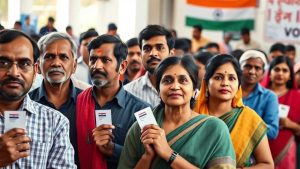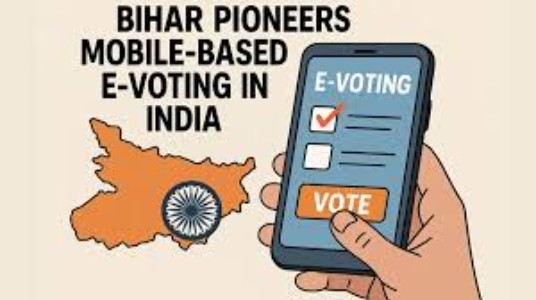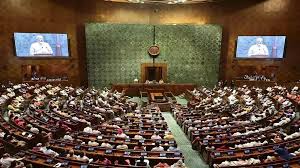Bihar has made history by becoming the first Indian state to introduce mobile phone-based e‑voting in local body elections—a pioneering step in electoral modernization that records over 70% participation via app-based voting.
A DIGITAL FIRST: E-VOTING VIA MOBILE APP
On June 28, 2025, during municipal and nagar panchayat elections across 42 municipalities in 26 districts, Bihar launched the e‑voting pilot using two Android apps—e‑SECBHR by C‑DAC and a companion app by the Bihar SEC
The system was tailored for:
- Senior citizens
- Persons with disabilities
- Pregnant women
- Migrants
- Those facing difficulty reaching polling stations
Over 70.20% of eligible voters participated by e‑voting, alongside 54.63% visiting traditional booths—bringing overall turnout to 62.41%

For too long, barriers like distance, physical challenges, and work commitments have hindered voter turnout, especially in local elections. Bihar’s initiative directly addresses these issues, bringing the polling booth right to the fingertips of its citizens. Imagine the convenience for the elderly, persons with disabilities, pregnant women, and even migrant workers who traditionally face immense difficulties in casting their votes. This isn’t just about technology; it’s about empowerment and ensuring every voice counts.
The success story of Bihar’s e-voting platform isn’t just in the numbers; it’s in the underlying commitment to security and accessibility. The system, developed by the Centre for Development of Advanced Computing (C-DAC) in collaboration with the Bihar State Election Commission, incorporated robust security measures.
SECURING THE BALLOT WITH CUTTING EDGE
To balance convenience with integrity, the system incorporates:
- Blockchain for tamper-proof vote recording
- Face recognition, liveness verification, and biometric authentication
- Optical Character Recognition (OCR) for vote tallying
- Digital VVPAT-like audit trails
- Digital locks on EVM strongrooms
Access is restricted: only pre-registered users, max two per mobile number, and each vote cross-verified with voter ID.
A LANDMARK MOMENT : FROM DUBAI TO EAST CHAMPARAN
The initiative’s flexibility allowed voters to cast ballots from international locations, including Dubai and Qatar, demonstrating outreach for migrant communities
Bibha Kumari of East Champaran became the first person in India to vote via mobile in a local election.
WHY IT MATTERS : INCLUSION MEETS INNOVATION
- Boosted Turnout: Early results show increased voter engagement through digital access
- Increased Voter Participation: By removing physical barriers, e-voting can significantly boost turnout, making our democracy more representative.
- Expanded Participation: Enables segments like the elderly, disabled, pregnant women, migrants, and patients to vote without physical constraints
- Enhanced Convenience: Voters can exercise their franchise from anywhere, eliminating the need for long queues and travel.
- Cost Efficiency: In the long run, e-voting could lead to substantial savings on election logistics, manpower, and printing.
- Greater Inclusivity: It provides a crucial avenue for marginalized groups to participate more easily in the democratic process.
- Global Benchmark: Bihar is the second jurisdiction globally—after Estonia—to test blockchain-based mobile e‑voting
- A Blueprint for the Future: Bihar’s success can serve as a model for other states and potentially even national elections, gradually transitioning India towards a more digitally advanced electoral landscape.
CHALLENGES & THE ROAD AHEAD
While ambitious, the move requires careful management of:
- Digital Divide: Potential exclusion of voters lacking smartphones or digital literacy
- Cybersecurity Risks: Though blockchain is robust, it’s not invulnerable—security must be continuously strengthened .
- Legal Readiness: Scaling this model depends on clear regulatory support, including voter privacy, auditability, and dispute resolution frameworks .
- Pilot Insights: Success of this experiment will influence its rollout in statewide Assembly elections.
The journey of e-voting in India has just begun. Continuous evaluation, refinement of security protocols, and widespread digital literacy campaigns will be vital for its sustained success. However, Bihar has taken a bold and commendable step, proving that with innovation and strategic implementation, technology can indeed strengthen the foundations of our democracy.
Bihar’s e‑voting pilot sends a clear message: embracing technology can bring democratic rights closer to citizens, especially those on society’s margins. If adopted responsibly, with strong security, legal safeguards, and digital inclusivity, this pioneering model holds the promise to transform how India votes—digitally, accessibly, and securely.
This is a proud moment for Bihar, and a promising sign for the future of elections in India. The democratic fabric of our nation just got a significant digital upgrade!



